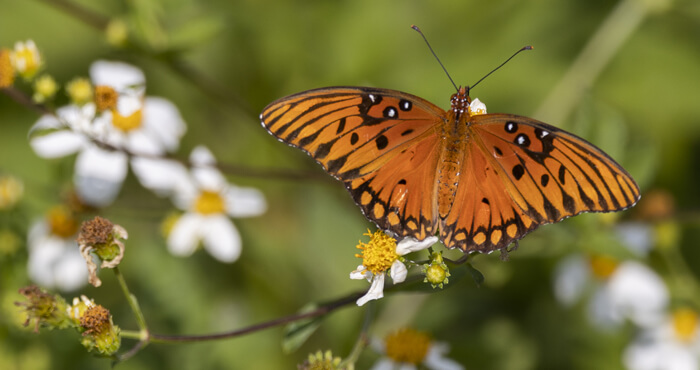
Fire Ants in Florida
Get Rid of These Invasive Pests
Overview
Fire ants are notorious for their painful, burning stings that result in pustules and intense itching, which can persist for up to ten days. If the pustules are broken, infections may occur. Some people even have allergic reactions to fire ant stings. Besides attacking humans, fire ants also sting pets, livestock, and wildlife.
Native to South America, fire ants are considered an invasive species in the United States. These aggressive insects are reddish-brown to black and from one-eighth to one-quarter of an inch long.
Habitat
Fire ants build large nests, usually in the form of visible dirt mounds, but also:
- In rotting logs
- Around trees and stumps
- Under pavement and buildings
- Indoors
- Inside electrical equipment and utility housings, sometimes resulting in short circuits.
When their nests are disturbed, many fire ants will quickly run out of the mound and attack any intruder.
Food
Fire ants are omnivorous feeders. They will eat:
- Carbohydrates (e.g., fruits, sugars, and syrups)
- Proteins (e.g., insects and meat)
- Lipids (e.g., grease, lard, and oils from seeds)
Workers will forage for food more than one hundred feet from the nest. They can forage during both the day and the night, generally when air temperatures are between 70° and 90°F. When a large food source is found, the ants recruit other workers to help take the food back to the colony.
Treatment Options
Imported fire ants have been the target of innumerable methods of control. Unfortunately, there are no control methods that will permanently eliminate fire ants from an area. Four strategies have traditionally been used to control fire ants:
- Broadcast bait applications
- Individual mound treatments
- A combination of broadcast baiting and individual mound treatments
- Barrier and spot treatments
Biological Control
A relatively new control method involves the release and spread of RIFA's natural enemies. These are known as biological control organisms. Biological control organisms kill fire ants in their native South America but have only recently been brought to the U.S. The effectiveness of two of these biological control organisms is currently being tested on fire ants in Florida. The first is the decapitating fly of the genus Pseudacteon. These attack fire ant workers and cause them to hide instead of feed, weakening the colony. When they do catch RIFA, female flies lay eggs which develop inside the fire ant head, causing it to fall off. Adult flies emerge from the severed head and attack other fire ants. The second biological control agent is a fire ant disease (Thelohania solenopsae). The disease is introduced into colonies by placing infected RIFA larvae in the mound. The disease is caused by a protozoan which weakens the colony. Weakened colonies result in fewer fire ant reproductives to start new colonies.
Reinfestation
Fire ants are extremely resilient. In areas where both fire ant populations and native ants have been reduced or eliminated with insecticides, reinfestation by fire ants may be noticeable within a month after treatment. Fire ants reinfest these areas more rapidly than other ant species and can outcompete them.
If fire ant control is not maintained, the subsequent reinfestation of an area may result in even greater fire ant populations than existed before the application of insecticides.
For more information on integrated pest management (IPM), visit IPM Florida.
Condensed from:
"Managing Imported Fire Ants in Urban Areas" (ENY226) by David H. Oi and Philip G. Koehler. Published by: Entomology and Nematology Department (last revised 07/2015).
Resources
Other UF/IFAS Sites
- Gardening Solutions
- Entomology and Nematology Department
- Environmental Horticulture Department
- FAWN: Florida Automated Weather Network
- Florida-Friendly Landscaping™ Program
- Florida Master Gardener Program
- IPM Florida
- Pesticide Information Office
UF/IFAS Publications
- Florida-Friendly Landscaping™ Program
- Central Florida Gardening and Landscaping Fact Sheets
- Starting a Garden
State & Federal Agencies
- Florida Department of Agriculture and Consumer Services (FDACS)
- Florida Department of Environmental Protection (FDEP)
- Florida Energy Systems Consortium (FESC)
- U.S. Environmental Protection Agency (EPA)
- USDA Plant Hardiness Zone Map--U.S. National Arboretum
Organizations & Associations
- American Community Gardening Association
- American Horticultural Society
- Florida Native Plant Society
- Florida Nursery, Growers and Landscape Association (FNGLA)
- North American Native Plant Society
Other Sites & Publications
UF/IFAS Mobile Web Apps



.jpg)

.jpg)
